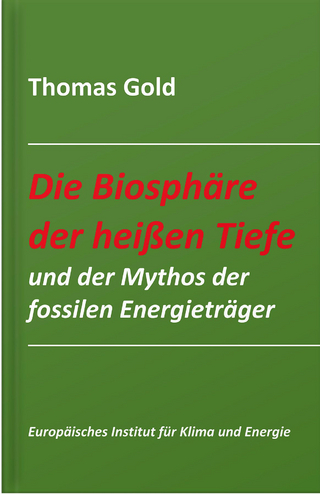
Hansen Solubility Parameters
A User's Handbook
Seiten
1999
Crc Press Inc (Verlag)
978-0-8493-1525-1 (ISBN)
Crc Press Inc (Verlag)
978-0-8493-1525-1 (ISBN)
- Titel erscheint in neuer Auflage
- Artikel merken
Zu diesem Artikel existiert eine Nachauflage
Charles Hansen began his work with solvents in 1962, and almost immediately began producing new and groundbreaking results. This work includes examples related to coatings, biological systems, pigments, and fibers. It is suitable for predicting compatibility, adsorption on surfaces, and orientation toward materials of similar affinities.
Charles Hansen began his work with solvents in 1962, and almost immediately began producing new and groundbreaking results. Since then, his Hansen Solubility Parameters have been extensively used and proven valuable to a variety of industries, including coatings, adhesives, plastics, protective clothing, and environmental protection. They allow correlations and systematic comparisons previously not possible, such as polymer solubility, swelling and permeation, surface wetting and dewetting, the solubility of organic salts, and many biological applications. Until now, however, their seemingly universal ability to predict molecular affinities has been generally taken as semiempirical.
Moving beyond the Hildebrand and Flory theories, Hansen found that his approach not only quantitatively describes hydrogen bonding and polar bonding in many types of systems, but in fact agrees with and extends the very general Prigogine theory. This explains why the correlations all seem to fit with an apparently "universal" 4: it results from the validity of applying the geometric mean rule to describe dispersion, permanent dipole-permanent dipole, and hydrogen bonding interaction in mixtures of unlike molecules.
Hansen Solubility Parameters provides new tables of previously unpublished correlations and parameters. The author illuminates his text with practical examples related to coatings, biological systems, pigments, and fibers, and takes a general approach that makes this reference ideal for predicting compatibility, adsorption on surfaces, orientation toward materials of similar affinities (self-assembly), and other phenomena associated with solubility and affinity.
Chemists, chemical engineers, and biochemists will find this book-the collected work and experience of the father of its concept-intriguing for its theory and invaluable for its data.
Charles Hansen began his work with solvents in 1962, and almost immediately began producing new and groundbreaking results. Since then, his Hansen Solubility Parameters have been extensively used and proven valuable to a variety of industries, including coatings, adhesives, plastics, protective clothing, and environmental protection. They allow correlations and systematic comparisons previously not possible, such as polymer solubility, swelling and permeation, surface wetting and dewetting, the solubility of organic salts, and many biological applications. Until now, however, their seemingly universal ability to predict molecular affinities has been generally taken as semiempirical.
Moving beyond the Hildebrand and Flory theories, Hansen found that his approach not only quantitatively describes hydrogen bonding and polar bonding in many types of systems, but in fact agrees with and extends the very general Prigogine theory. This explains why the correlations all seem to fit with an apparently "universal" 4: it results from the validity of applying the geometric mean rule to describe dispersion, permanent dipole-permanent dipole, and hydrogen bonding interaction in mixtures of unlike molecules.
Hansen Solubility Parameters provides new tables of previously unpublished correlations and parameters. The author illuminates his text with practical examples related to coatings, biological systems, pigments, and fibers, and takes a general approach that makes this reference ideal for predicting compatibility, adsorption on surfaces, orientation toward materials of similar affinities (self-assembly), and other phenomena associated with solubility and affinity.
Chemists, chemical engineers, and biochemists will find this book-the collected work and experience of the father of its concept-intriguing for its theory and invaluable for its data.
Solubility Parameters--An Introduction
Theory-The Prigogine Corresponding States Theory, the c12 Interaction Parameter, and the Hansen Solubility Parameters
Methods of Characterization-Polymers
Methods of Characterization-Surfaces
Methods of Characterization for Pigments, Fillers, and Fibers
Applications-Coatings and other Filled Polymer Systems
Applications-Chemical Resistance
Applications-Barrier Polymers
Hansen Solubility Parameters-Biological Materials
Applications-Safety and Environment
The Future
Appendix
| Erscheint lt. Verlag | 17.9.1999 |
|---|---|
| Zusatzinfo | 52 equations; 39 Tables, black and white |
| Verlagsort | Bosa Roca |
| Sprache | englisch |
| Maße | 178 x 254 mm |
| Gewicht | 590 g |
| Einbandart | gebunden |
| Themenwelt | Naturwissenschaften ► Biologie ► Biochemie |
| Naturwissenschaften ► Chemie ► Organische Chemie | |
| Naturwissenschaften ► Chemie ► Physikalische Chemie | |
| Technik | |
| ISBN-10 | 0-8493-1525-5 / 0849315255 |
| ISBN-13 | 978-0-8493-1525-1 / 9780849315251 |
| Zustand | Neuware |
| Informationen gemäß Produktsicherheitsverordnung (GPSR) | |
| Haben Sie eine Frage zum Produkt? |
Mehr entdecken
aus dem Bereich
aus dem Bereich
Buch (2024)
TvR Medienverlag Jena
CHF 37,80



